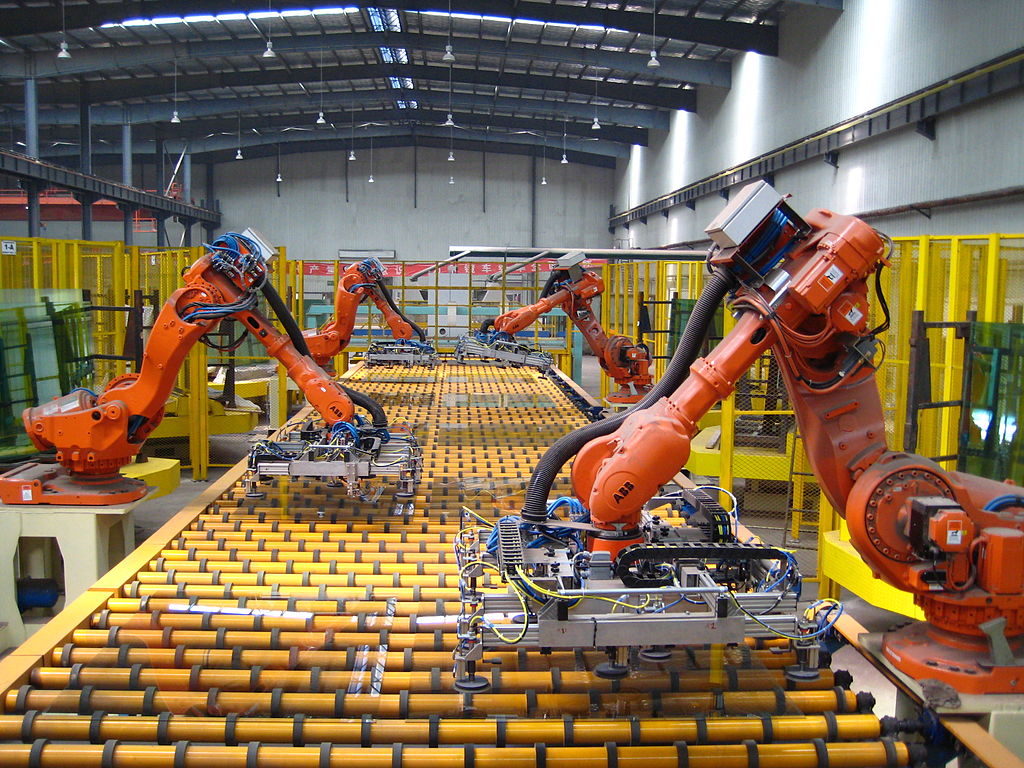According to China Robot Industry Alliance (CRIA), more than 19 thousand industrial robots were sold in the first half of 2016 in the country.
64 thousand industrial robots were delivered in the January-November period, which is 90% more than in the entire 2015. About 3 thousand manufacturers of robots appeared over the last 5 years in China.
Various industrial sectors, including packaging, welding and assembly, begin to understand value of industrial robots in production process. According to statistics from International Federation of Robotics, the market has grown from $ 8.5 billion in 2013 to $ 12.3 billion last year. China was the largest consumer of these products in 2013.
Meanwhile, Deputy chief engineer of the Beijing Research Institute of Automation Engineering Xie Bingbing believes that the Chinese market robots needs of new standards, developed by the government and the market.
Tao Yuxia, sales manager at LXD Robotics, one of the largest manufacturers of robots in Guangdong, said the company showed a big jump in sales this year. "I think that our annual sales this year will be about 200 billion yuan, over 50 percent more than last year. About 60 percent of customers are manufacturers of the Pearl River Delta, 10 per cent came from abroad, and the rest from other provinces." Earlier this year, the company reported that its annual sales will reach 300 million yuan. Perhaps, this is a sign that the "robot fever" is China is cooling down.
Driven by government policy to replace human labor with robotic, nearly 3,000 new robots appeared in 2014 in the country, according to Wang Cairong, general secretary of the China Artificial Intelligence Robot Industry Alliance. As of September this year, more than 100 publicly listed mainland enterprises have invested in the robotic industry.
However, he also noted that the robotics frenzy is calming down. "A large amount of capital investment in the market has slowed down after experts found that it is not so highly profitable," - he added.
"Despite impressive sales growth figures, majority of domestic manufacturers of robots and system integrators do not receive profit due to tough competition," - says Zhang. - "Most of China's robot manufacturers face the same dilemma as in 2015. They still rely heavily on imported materials and inability to independently produce high quality industrial robots," - he said.
Both experts believe that sale of industrial robots will continue to demonstrate a stable growth next year amid an uncertain economic environment.
Regardless of the economic situation, need for replacement of human labor with robots will persist due to a sharp increase in labor costs and inflation, and will stimulate demand in the long term. Manufacturers in the industries of chemical, food and consumer goods industry will also contribute in rising demand.
China is the largest market for industrial robots in the world, accounting for a quarter of global sales, says the International Federation of Robotics. Annual sales of the country's industrial robots in the manufacturing sector are expected to amount to 150 000 by 2020.
source: financialexpress.com, scmp.com
64 thousand industrial robots were delivered in the January-November period, which is 90% more than in the entire 2015. About 3 thousand manufacturers of robots appeared over the last 5 years in China.
Various industrial sectors, including packaging, welding and assembly, begin to understand value of industrial robots in production process. According to statistics from International Federation of Robotics, the market has grown from $ 8.5 billion in 2013 to $ 12.3 billion last year. China was the largest consumer of these products in 2013.
Meanwhile, Deputy chief engineer of the Beijing Research Institute of Automation Engineering Xie Bingbing believes that the Chinese market robots needs of new standards, developed by the government and the market.
Tao Yuxia, sales manager at LXD Robotics, one of the largest manufacturers of robots in Guangdong, said the company showed a big jump in sales this year. "I think that our annual sales this year will be about 200 billion yuan, over 50 percent more than last year. About 60 percent of customers are manufacturers of the Pearl River Delta, 10 per cent came from abroad, and the rest from other provinces." Earlier this year, the company reported that its annual sales will reach 300 million yuan. Perhaps, this is a sign that the "robot fever" is China is cooling down.
Driven by government policy to replace human labor with robotic, nearly 3,000 new robots appeared in 2014 in the country, according to Wang Cairong, general secretary of the China Artificial Intelligence Robot Industry Alliance. As of September this year, more than 100 publicly listed mainland enterprises have invested in the robotic industry.
However, he also noted that the robotics frenzy is calming down. "A large amount of capital investment in the market has slowed down after experts found that it is not so highly profitable," - he added.
"Despite impressive sales growth figures, majority of domestic manufacturers of robots and system integrators do not receive profit due to tough competition," - says Zhang. - "Most of China's robot manufacturers face the same dilemma as in 2015. They still rely heavily on imported materials and inability to independently produce high quality industrial robots," - he said.
Both experts believe that sale of industrial robots will continue to demonstrate a stable growth next year amid an uncertain economic environment.
Regardless of the economic situation, need for replacement of human labor with robots will persist due to a sharp increase in labor costs and inflation, and will stimulate demand in the long term. Manufacturers in the industries of chemical, food and consumer goods industry will also contribute in rising demand.
China is the largest market for industrial robots in the world, accounting for a quarter of global sales, says the International Federation of Robotics. Annual sales of the country's industrial robots in the manufacturing sector are expected to amount to 150 000 by 2020.
source: financialexpress.com, scmp.com



















